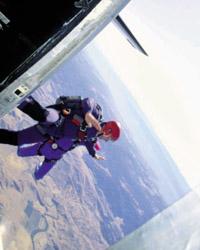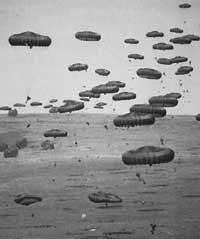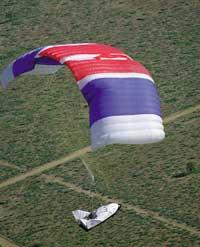As flying as Txoria!
2002/10/01 Atxotegi Alegria, Uhaina - Elhuyar Zientziaren Komunikazioa Iturria: Elhuyar aldizkaria
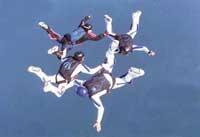
It was born in the French capital on 31 January 1769. Believing that studying physics was little for him, he also obtained degrees in chemistry and astronomy. At age 14, Pilâtre de Rozier and Marquis d’Arlande had the opportunity to see the first balloon flight. Since that day, in ancient times, aeronautics became a passion, but unfortunately, in those years the French revolution began and the Austrians imprisoned it. He spent three years in Austrian prisons.
Global Jump
Upon returning to France he began to work on his head during his stay in Austria: he began to build the first balloons and organize flights. At first, before he himself made the jumps he had planned, he made them to his dog. As that animal never died, he had to dare.
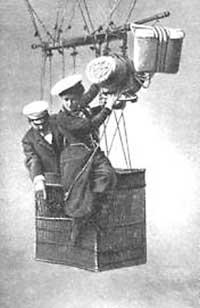
In October 1797, at Garnerín's first jump in Monceau Park, his assistant said the following phrases: “Garnerine has achieved the promised parachute jump and it has been spectacular. When he had a minute in the air and 600 meters high, Garnerín cuts the rope and the ball rises and opens. Our physicist has managed to fall with a parachute and, despite the fact that when he landed he twisted his leg a little, everything came out as he wanted.”
The parachute he used that day was silk and was held by 36 rigid sticks. In total, the fabric had a diameter of 8 meters and the top was formed by a wooden disc. This disc was placed, among other things, for air to enter the parachute and raise the ball.
The most important problem Garnerine had during the flight was the constant rolling of the parachute. Therefore, the physicist Lalande, who approached to see the jump, advised Garnerin to drill a little bit the tip of the cloth to pass the air and somehow reduce the swings. After that jump, he did all the others following Lalander's advice.
In 1802, while in England, Garnerin decided to make more or less long trips through the sky: the first trip was 300 kilometers from Moscow to Poland; in 1807 the previous trip increased by 95 kilometers and arrived from Paris to Clausen.
But, unfortunately, the man so attracted to heaven died very young (at age 41): while preparing all the tools for another long journey, he fell a long beam and a floor on his head and died there.
Parachute evolution

Since the time of Garnerin, like all tools, parachutes have been improved. In 1897 a parachute was invented that was not supported. Unlike the above, instead of a large basket he wore a trapezoidal bar. Tom Baldwin was the first to jump with this tool.
But was aeronautics used only for leisure? No. As soon as the parachute was invented, this instrument filled the eye to the military. This tool was widely used, creating new materials and techniques: In World War I, armies improved parachutes to protect their pilots. In 1930 the Red Army reused the parachutes: the pilots, thanks to this progressive instrument, began to land behind enemy lines and created a new war tactic.
In addition to military uses, in the 1930s an attempt was made to recognize aeronautics as a sport on more than one occasion. However, it was necessary to wait until the 1950s for the Aeronautical Federation to recognize it as sport. The first athletes wore military suits and parachutes, but gradually, as the competition between athletes grew, began to market material adapted to them.
After its approval as an aeronautical sport, the first world championships in this area were held in Yugoslavia in 1951. Since then, athletes have to pass a series of tests: the first, which the military performed several times, the landing test; the second, is a jump with images. In this exercise, paratroopers have to jump 2,000 meters and make six different images. The relative flight is usually a third test: Between 4 and 8 jacks join in the air and have to make some preset images for as long as they want. And the last test is the contact of fabrics: The 4-8 paratroopers, with their parachutes open, are forced to meet and make images established by the judges for a certain time.

Skydiving has turned the same as André-Jacques in his day in the sky. It arose from the passion of some scientists to build new tools, enjoy them and overcome the limits of physics, has been used and continues to be used to harm human beings, and less badly that since the middle of the last century we return to its original use and have a leisure tool.

Gai honi buruzko eduki gehiago
Elhuyarrek garatutako teknologia




